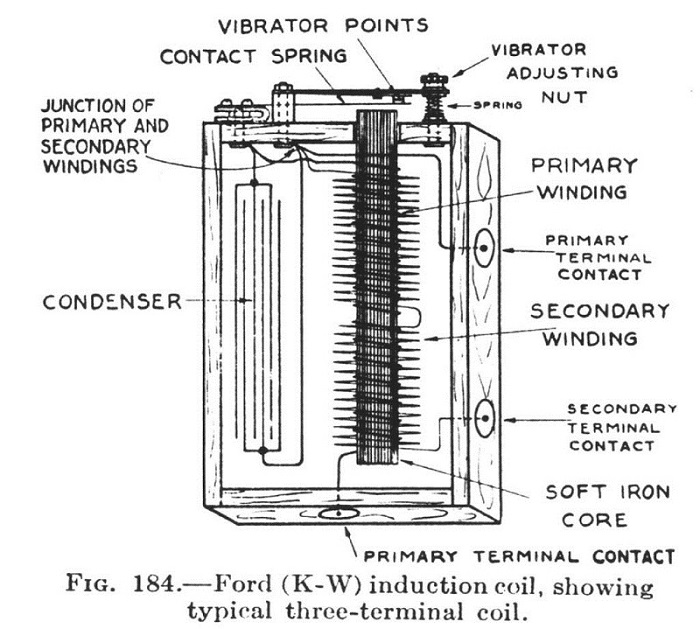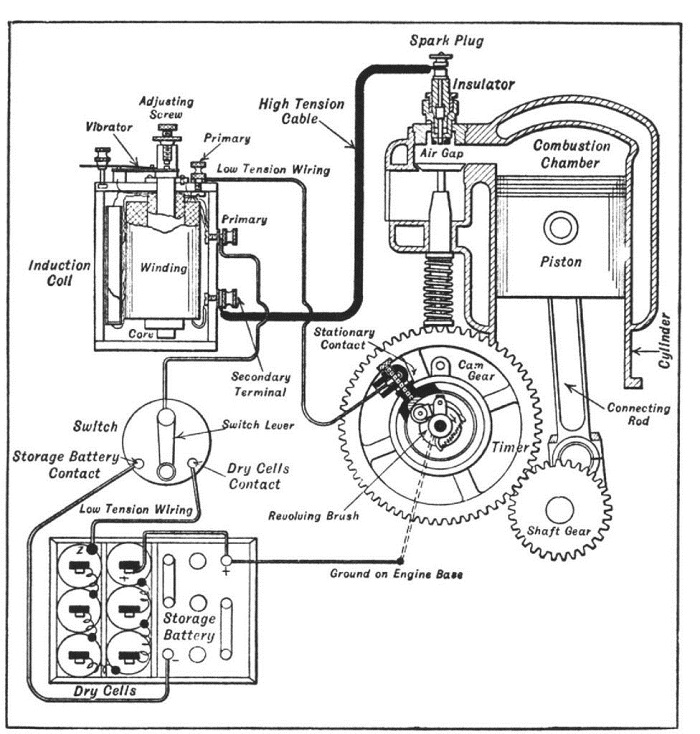Joseph Williams Patent 1,092,417. Ignition Apparatus.
The “Buzz Coil” is a trembler coil, a type of make-and-break circuit. It was used in the Ford Model T to generate sparks for engine ignition. The vibrator oscillated with a frequency of around 200 Hz, producing a buzzing sound similar to that of a bee.
The “buzz coil” contains of two windings of wires wound around an iron core. The iron core is not solid, but rather a bundle of iron wires, in order to prevent eddy currents.
The primary winding consists of 212 turns of heavy-gauge wire. Current flowing through the primary winding turns the iron core into an electromagnet.
The secondary winding consists of 16,600 turns of a fine-gauge wire wrapped around the iron core, outside of the primary winding. This winding is connected to the spark plug.
When current flows through the primary winding, the force produced by the electromagnet attracts the spring downwards, which breaks contact with the vibrator point, cutting off current to the primary winding. This causes the magnetic field to collapse, which induces a high voltage in the secondary winding (this voltage is then used to produce a spark at the spark plug).
The collapse of the magnetic field also allows the spring to return upwards and make contact with the vibrator point, which returns current to the primary winding and starts the cycle over again. This process happens approximately 200 times per second.
The vibrator contact points were initially made of an alloy of 80% platinum and 20% iridium. In 1914 Ford switched to pure tungsten. The platinum points were more reliable, durable, and produced stronger ignition sparks, but they were more expensive and also required occasional cleaning, filing, and adjustment due to pitting. The tungsten points required a higher voltage to operate, since they oxidized quickly, developing a resistive film. The tungsten points were also more susceptible to electrical arcing across the points, so the buzz coils with tungsten points required more powerful condensers.

